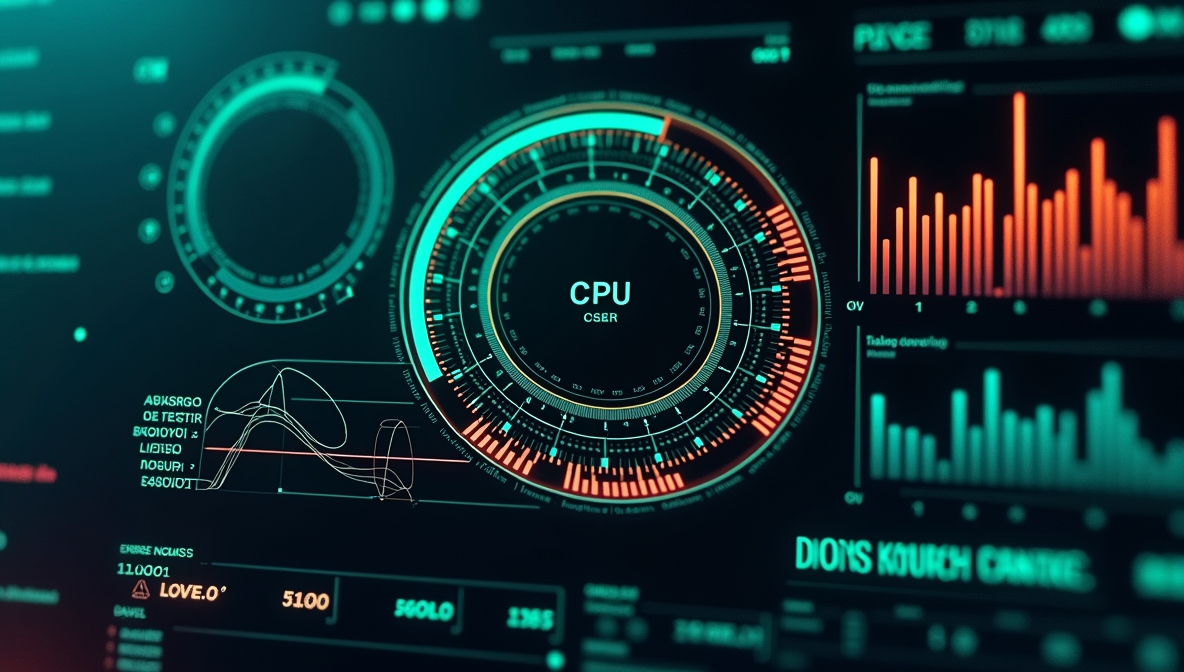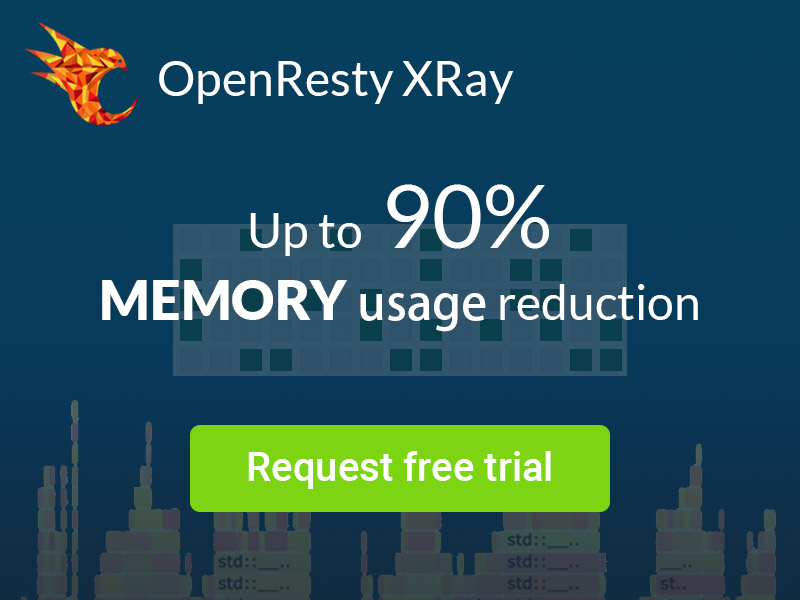Self-Optimization: The Performance Evolution of OpenResty XRay
OpenResty XRay is a post-modern professional code performance analysis tool designed for extremely complex systems. It can thoroughly analyze various performance bottlenecks during program runtime at very low cost and in a very short time. In this rapidly growing internet era, its core advantages precisely address two major challenges faced by engineers: first, accurately identifying performance issues and providing actionable optimization suggestions, and second, supporting multiple programming languages and runtime environments to handle increasingly complex systems. Through non-intrusive dynamic tracing technology, OpenResty XRay allows engineers to comprehensively capture system operational states without taking machines offline, modifying source code, or restarting services, providing developers with a clear performance panorama. Today, we will share a special case — how OpenResty XRay analyzes and optimizes its own components to achieve amazing performance improvements.
Challenges and Pain Points
Dynamic tracing technology, as a postmodern advanced debugging method, faces its own challenges in our practice. Recently, our team encountered severe performance challenges when running a dynamic tracing tool for analyzing the internals of the V8 virtual machine. This is an offline analysis component in the OpenResty XRay ecosystem, with a complex structure and computation-intensive operations. Initially, compiling this tool consumed nearly 41 minutes of CPU time, and this lengthy wait seriously impacted development efficiency and iteration speed.
In this rapidly growing internet era, simply adding hardware resources is not a sustainable solution when facing large-scale, complex systems. On one hand, hardware costs quickly escalate; on the other hand, certain performance bottlenecks are fundamentally algorithmic and architectural issues that cannot be resolved through hardware expansion. This reflects the two major challenges we face in our daily work: scale and complexity, which together lead to engineers gradually losing control over systems.
OpenResty XRay’s Self-Analysis Process
Facing this challenge, we decided to use OpenResty XRay to profile the performance of this analysis tool itself—a postmodern debugging scenario of “tools analyzing tools.” Through the automated analysis capabilities of OpenResty XRay, we were able to clearly identify critical performance bottlenecks in the code at very low cost and in an extremely short time, thereby formulating targeted optimization strategies.
Remarkable Optimization Results
After the first round of optimization, we reduced the compilation time from 41 minutes to just 3 minutes through minimal code changes, achieving a 13x performance improvement. In such a complex system, this achievement was already exciting, but our optimization journey didn’t stop there.
Under the guidance of OpenResty XRay, our engineers conducted more in-depth optimization work, further excavating performance potential. Eventually, the compilation time for the same tool was compressed to just a few seconds, achieving performance improvements of tens or even hundreds of times compared to the initial state. This tremendous performance boost enables us to better address the rapidly growing scale and complexity challenges in today’s internet era.
Technical Insights and Business Value
This case vividly demonstrates our engineering philosophy of “endless optimization” while highlighting the significant value brought by OpenResty XRay:
Deep Optimization Potential: Even for code meticulously written by experienced engineers, through systematic performance analysis, we can often achieve multiple or even order-of-magnitude performance improvements.
Development Efficiency Improvement: Reducing compilation time from 41 minutes to a few seconds greatly enhances developer productivity and iteration speed, allowing us to respond to changes more rapidly.
Resource Cost Savings: Optimized systems require fewer computing resources, directly reducing operational costs. In large-scale deployment environments, the benefits of such optimization are multiplied.
Large-scale Problem-solving Capability: Some scalability performance issues cannot be solved by simply adding hardware but require deep optimization. OpenResty XRay allows us to analyze and solve mysterious problems in production environments without taking systems offline or restarting them.
Self-evolution Capability: OpenResty XRay can “self-analyze and self-optimize,” enabling us to maintain insight and control over software systems even when facing increasingly complex systems.
Conclusion
OpenResty XRay has demonstrated its powerful capabilities as a performance analysis tool through this “self-optimization” practice, while also validating the enormous potential of system performance optimization. As shown in the case study presented in this article, the transformation from 41 minutes to just a few seconds is the best proof of OpenResty XRay’s deep analytical capabilities.
We will continue to uphold the philosophy that “optimization has no end,” constantly improving OpenResty XRay’s analytical capabilities and user experience to create greater value for users. No matter how complex or efficient your system is, OpenResty XRay can help you discover more optimization opportunities and achieve qualitative leaps in performance.
OpenResty Inc. also provides powerful private library services covering technical needs across various industries. These private libraries offer significant advantages in performance optimization, security protection, and data processing, helping enterprises quickly build efficient, secure, and reliable application systems. Whether in finance, e-commerce, travel, or media industries, OpenResty’s private library services can provide targeted solutions.
What is OpenResty XRay
OpenResty XRay is a dynamic-tracing product that automatically analyzes your running applications to troubleshoot performance problems, behavioral issues, and security vulnerabilities with actionable suggestions. Under the hood, OpenResty XRay is powered by our Y language targeting various runtimes like Stap+, eBPF+, GDB, and ODB, depending on the contexts.
If you like this tutorial, please subscribe to this blog site and/or our YouTube channel. Thank you!
About The Author
Yichun Zhang (Github handle: agentzh), is the original creator of the OpenResty® open-source project and the CEO of OpenResty Inc..
Yichun is one of the earliest advocates and leaders of “open-source technology”. He worked at many internationally renowned tech companies, such as Cloudflare, Yahoo!. He is a pioneer of “edge computing”, “dynamic tracing” and “machine coding”, with over 22 years of programming and 16 years of open source experience. Yichun is well-known in the open-source space as the project leader of OpenResty®, adopted by more than 40 million global website domains.
OpenResty Inc., the enterprise software start-up founded by Yichun in 2017, has customers from some of the biggest companies in the world. Its flagship product, OpenResty XRay, is a non-invasive profiling and troubleshooting tool that significantly enhances and utilizes dynamic tracing technology. And its OpenResty Edge product is a powerful distributed traffic management and private CDN software product.
As an avid open-source contributor, Yichun has contributed more than a million lines of code to numerous open-source projects, including Linux kernel, Nginx, LuaJIT, GDB, SystemTap, LLVM, Perl, etc. He has also authored more than 60 open-source software libraries.



















